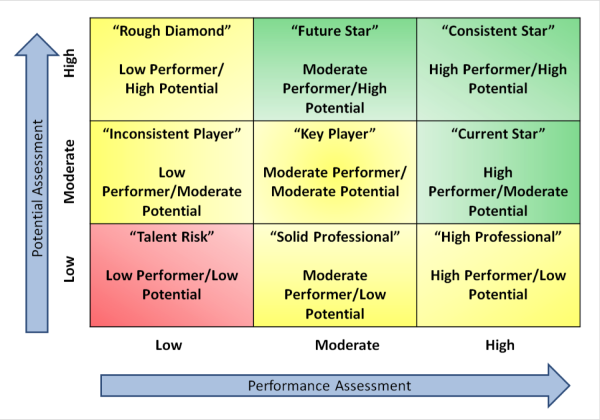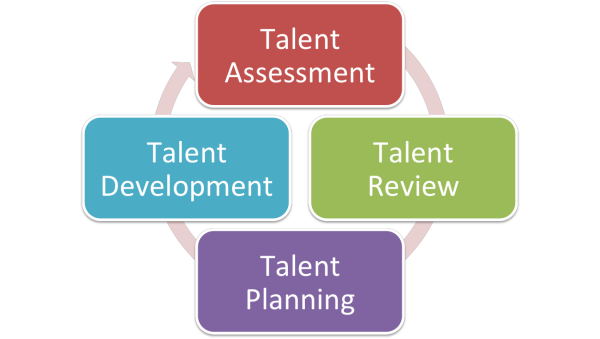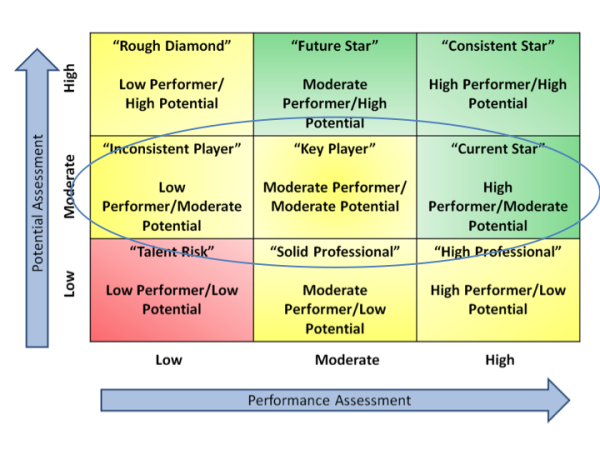Is it a Secret? Communicating Hi-Po Status in Succession Planning.
 Whether or not to communicate a leader’s “high-potential” status, as identified through the succession planning process, is one of our clients’ most frequently-asked questions. There are many valid reasons for apprehension here:
Whether or not to communicate a leader’s “high-potential” status, as identified through the succession planning process, is one of our clients’ most frequently-asked questions. There are many valid reasons for apprehension here:
- The fear of creating a culture of “haves” and “have nots,"
- Potential disappointment if a “high-potential” individual is not promoted, or
- Ensuring valuable leadership development and coaching opportunities for the leaders identified.
Transparency Has Clear Benefits
 While the concerns about whether or not to communicate status are valid, the research has shown that succession planning processes with transparency are better received and are increasingly being used in high performing organizations (Conger and Fulmer, 2003). However, there are several alternatives in terms of the amount of transparency used in the process, including
While the concerns about whether or not to communicate status are valid, the research has shown that succession planning processes with transparency are better received and are increasingly being used in high performing organizations (Conger and Fulmer, 2003). However, there are several alternatives in terms of the amount of transparency used in the process, including
- A candidate may have full access to his/her talent profile, but is not informed as to the results of various talent assessments (and therefore is not informed of his/her potential status).
- A candidate may be informed that he/she has potential though it is not defined at a specific level (e.g., low-medium-high).
- A candidate may be informed of his/her specific level of potential determined from various talent assessments and therefore understands if he/she has “high” potential.
Ultimately, the culture of the organization and the trust level among leaders is what will dictate the level or amount of transparency used in the process. Organizations that have more experience with assessment and feedback processes (such as 360 feedback, as an example) and have encouraged open dialogue with regard to leaders’ strengths and development areas have already begun building a feedback-rich culture. In these organizations, open dialogue and feedback is often expected and this may subsequently encourage more transparency in the process.
When the succession planning process is clearly aligned with learning and development, there is an expectation that leaders will receive developmental opportunities. Furthermore, if the talent assessment process emphasizes that each leader possesses unique strengths and development areas, this leads to another expectation that developmental opportunities will differ based upon those individual needs. When the process is positioned in this manner, candidates expect (and receive) development offerings targeted to their individual needs. This avoids the fear of excluding certain people from specific developmental activities that may be reserved for the high-potentials.
Share the Right Information
Once an organization has made a decision on the level of transparency, they need to be clear on the information that should be communicated to candidates. We recommend that organizations consider:
- Defining the criteria for high-potential status so individuals understand why they have been placed in this group.
- Clarifying criteria is also important for perceptions of fairness across all leaders as high-potentials may eventually move on to a promotion.
- Reinforcing the message that high-potential status does not guarantee promotion.
- Articulating any new expectations that may be required for high-potentials, such as specific training and development opportunities.
Organizations are increasingly using a “9-Box” succession planning model to determine and communicate a candidate’s status in the succession planning process. Using this model, each candidate is placed in a cell based on his/her past record of performance and how this relates to his/her level of potential (a standard method is to use 3 performance categories and 3 potential categories thereby creating the “9-Box” grid for displaying talent). Even in those organizations where more transparency is used, it is strongly recommended that leaders only see their own placement in the “9-Box” and the relative comparisons with other leaders is not provided. While a discussion on the high-level strengths and development areas of a leadership team and the individual team members can be very helpful in building open dialogue and trust, we believe that discussing potential (which could have implications for promotion or salary increases) are not appropriate for peers when discussing one another.
At viaPeople, our consulting team has both developed and advised on many succession planning implementations and we are frequently asked about how (or if) a candidate’s status should be communicated. As the cultures within organizations can drastically differ, we do not recommend a “hard and fast” rule around the communication of status, however we generally recommend more vs less transparency. Still, there are many different levels of transparency that can be applied and what is most important is that organizations receive guidance from someone who has a great deal of experience and expertise in implementing succession planning initiatives.
What are your thoughts?
Please share your comments and success stories below or respond privately at lgroehler@viapeople.com.
Click here to learn more about viaPeople's Succession Planning solutions.
Save a copy of this article: Is it a Secret? Communicating High-Potential Status in Succession Planning.
Share this
You May Also Like
These Related Stories

Limited Potential Does Not Limit Options - Use the 9 Box to Develop Talent in Succession Planning

Development at the Top - Use the 9 Box to Develop Talent in Succession Planning

